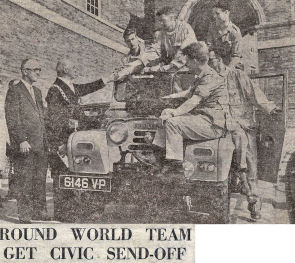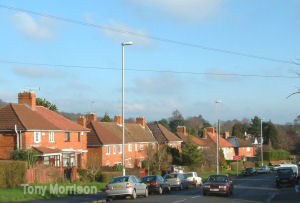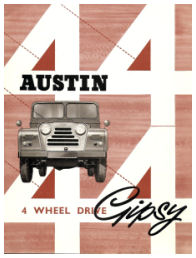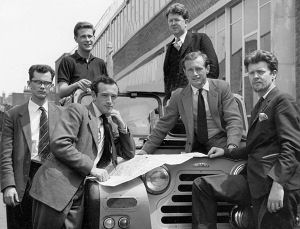| ||||||||
Around the world - An idea By 1958 the end of post-World War austerity was in sight. A few rubbish filled bomb sites still dotted the Bristol landscape and restaurants and wine bars were opening. But the University canteen aka 'The Refectory' was still spartan with plastic-topped tables and scuffed crockery. Tony Morrison joined Mark Howell sitting with a small group of geographers to chat about 'Finals', the last exams just a few weeks away and the feeling was glum. So what was the chance of a real break. "Let's go to India overland." An idea was mooted and it was an idea that caught the spirit of the time. Bristol had been a prosperous city for centuries and was imbued with the challenges of adventure. Even the Nazi bombing had not brought Bristol to its knees so an expedition with support from the city was a grand idea. The vision took another two years to become a reality. In August 1960 the Lord Mayor and University Vice Chancellor gave the team a civic send-off. Small steps With exam results settled and the threat of imminent penury lifted Mark joined the BBC as a trainee sound recordist. Tony stayed at the University for a postgraduate course in education that included the basics of movie-making. In 1950's Britain the University Education Department was immensely lucky to have a clockwork powered Swiss-made Bolex 16mm cine [movie] camera and a small budget for a roll or two of film. Cotham, Bristol Early in 1959 Mark wrote to Tony reviving the idea of an expedtion. They arranged to meet in The Cotham Hill 'pub where they agreed on an overland journey to India. A Cambridge University group had already led the way with a similar route and their book 'First Overland' [written by Tim Slessor and published in 1957] was a handbook of 'how to and how not to' make an expedition. An appendix in Slessor's book provided a detailed stage by stage account of the roads. Kabul to Jalalabad in Afghanistan was said to be an abominable stretch of gravel taking six hours for 102 miles and almost everywhere along the route was bad. " OK - Let's go and have a look. The next steps followed with preparing a pamphlet, approaches for sponsorship and gathering piles of maps - Mark was a geographer so he had a good start. Weekend meetings in Sea Mills, Bristol
Mark and Tony made an office in the cold and unheated , 'front room ' of Mark's parent's home in Sea Mills, a Bristol suburb. They wrote dozens of letters trying to raise business sponsorship.. The Cambridge team had used Land Rovers so to avoid a refusal Mark wrote to the Austin Motor Company which was just starting production of the four wheel drive Gipsy.
Within the space of a couple of months the journey began to look feasible and ambitiously the pair set the following year, 1960 as a starting date. But first the idea needed to grow - an extra one or two people were essential and that meant more money, equipment and clothes. the Austin Company felt that the Cambridge Land Rover team had done a good job of the route to India and Burma so they said 'why not go one better and take the car around the world' with the company providing support all the way. Publicity Tony was spending much of his time as a photographer with the Student Union paper the Nonesuch News and the lead writer Malcolm McKernan took up the idea and wrote a story run by editor Michael [Mike] Gorman as a front page and a double centre page with map and photos. [See the Press pages on the menu].The 'Expedition' was good news and was picked up by the local Press, the University authorities and a handful of enthusiasts.
Within a week or two a team was agreed. Some dropped out and others signed up firmly. Press photos were taken and a call went out for a second Gipsy - it was soon supplied on loan by a local Austin dealer. Malcolm as the senior member became the Administrative Leader, Don Pilton the doctor took charge of food and medicines, Roger Tutt an economist took over the budgets, Peter Krinks a geographer handled the maps, routes and study projects, Tony continued with publicity,the photography and film making,and Mark undertook the huge responsibility for keeping the vehicles on the move as well as the sound recording for the projects. The Bristol University Expeditions Society The University at Vice Chancellor level insisted that an Expeditions Society should be formed and and there must be some Senior Common Room officers on the committee. The first meeting of the Society was held in the Perry Room on 27th February 1960 at 3PM. Professor R.F Peel, Geography became the President, Dr.Bill Hunt a Home Office Pathologist accepted the post of Senior Treasurer. Dr. Alan Rogers who had been the medical officer on the British Trans-Antarctic Expedition took the job of checking the team's health and providing medical back-up. Dr.F.G Hannel, [Geography Department] was an adviser. By mid-1960 it was not all downhill to the starting gate but the team could say the 'show was on the road'. The Royal Geographical Society in London had given its blessing and The Lord Mayor of Bristol was delighted to be the Patron. Other names from the phenomonally wealthy City came in to help with cash.The total cash budget was £5,400 of which approximately one sixth was provided by the team | ||||||||
|



 The
Gipsy had a unique independent suspension sytem using rubber instead of traditional
metal springs. It was a well built but trimmed down version of an Army vehicle.
The response from Austin's came quickly offering a sparkling new Gipsy with a
front mounted winch plus generous support costs.
The
Gipsy had a unique independent suspension sytem using rubber instead of traditional
metal springs. It was a well built but trimmed down version of an Army vehicle.
The response from Austin's came quickly offering a sparkling new Gipsy with a
front mounted winch plus generous support costs.